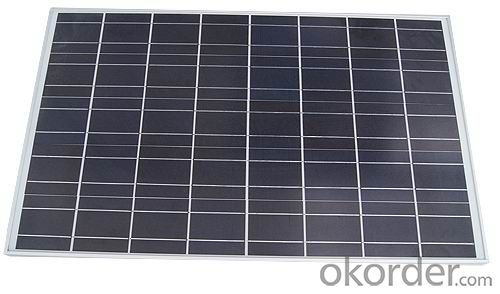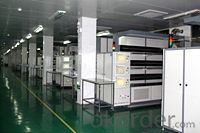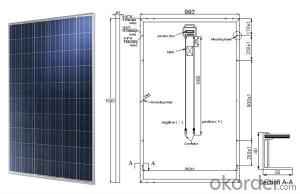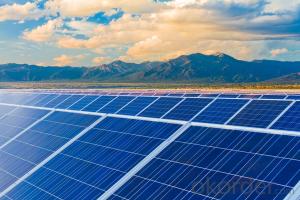Pa Solar Panels - Polycrystalline Solar Module TPB156x156-36-P
- Loading Port:
- Ningbo
- Payment Terms:
- TT OR LC
- Min Order Qty:
- 100 carton
- Supply Capability:
- 10000 carton/month
OKorder Service Pledge
OKorder Financial Service
You Might Also Like

Specification:
· Highest performance enabled by higher efficiency monocrystal line cells and the latest Solar Wafer Technology for multicrystal line cells
· Lower weight design which reduces the total system load on a roof, making it ideal for residential customers. Its shape allows for better roof utilization
· Its low weight means easier handling for installers
· Modules are designed to withstand PID (Potential Induced Degradation)*
· High light transmission Anti-Reflective Glass with improved self-cleaning capability
· 0/+5 W Positive power tolerance for reliable power output
Warranty
CNBM Solar provides one of the most comprehensive module warranties in the industry:
· 10 years for product defects in materials and workmanship
· First 12 years for 90% of warranted minimum power
· Remaining 25 years for 80% of warranted minimum power
Certification
CNBM Solar strictly carries out the ISO 9001 quality control methodology and has implemented check points at every step of the production process to ensure our product performance durability and safety. The stringent quality control process has been confirmed by numerous independent agencies and LDK Solar modules earned IEC, TUV and UL certifications.
· IEC:IEC 61215, IEC 61730 (1&2), conformity to CE
· UL 1703 2002/03/15 Ed:3 Rev:2004/06/30
· ULC/ORD-C1703-01 Second Edition 2001/01/01
· UL and Canadian Standard for Safety Flat-Plate
· ISO 9001: 2008 Quality Management Systems
· CEC Listed: Modules are eligible for California Rebates
· PV Cycle: Voluntary module take back and recycling program
· MCS Certificate


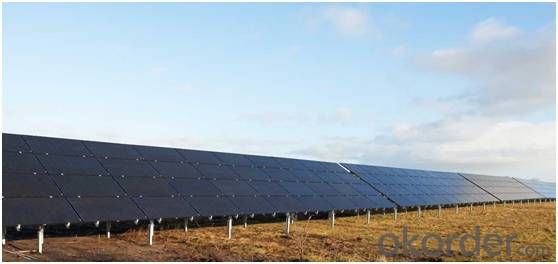
FAQ
Q: How long has Solar PV technology been around?
In 1838 the photoelectric effect was discovered by physicist Edmund Becquerel although it wasn't until the 1950's that the technology was developed enough to produce efficient working cells.
Q: Are Photovoltaic panels expensive?
Over the last 20 years the price of PV modules has fallen dramatically, from around £15 per Wpk in 1980 to current prices of around £3.50 per Wpk.
Q: Will I have to get planning permission?
Not in the vast majority of cases. However if you want your system ground mounted, if your property is part of a world heritage site, or is listed, then planning permission would likely have to be sought in advance.
Q: How long will a Solar PV system last?
The MCS accreditation scheme means that all panels installed under the scheme by approved agents will continue to generate for at least 25 years. Over this time their output will diminish slightly but they should still perform at 85% at the 25 year mark according to the scheme rules.
Q: How much Power can I expect to get from my Solar PV’s?
Typically an installed 1kWpk array will produce 800kWh/year. 2kWpk will produce 1600kWh/year and so on.
- Q: How do solar panels affect the overall resilience of a building?
- Solar panels can greatly enhance the overall resilience of a building by providing a reliable and sustainable source of electricity. By generating clean energy from the sun, solar panels reduce dependency on traditional power grids, making the building less susceptible to power outages and fluctuations. Additionally, solar panels can continue to operate during extreme weather events, ensuring a constant power supply. This increased energy independence and stability make the building more resilient and better equipped to withstand challenges and disruptions.
- Q: How much money can you save by using solar panels?
- The amount of money you can save by using solar panels varies depending on several factors, such as the size of the system, your energy consumption, the cost of electricity in your area, and the availability of sunlight. On average, solar panels can save homeowners thousands of dollars over their lifespan, typically between 10-30 years. Additionally, solar panels can reduce or eliminate your monthly electricity bills and can even allow you to earn credits through net metering programs. While the exact amount of savings is difficult to determine without considering specific circumstances, solar panels offer substantial long-term financial benefits.
- Q: i check the diodes in the backside of solar panels it reads out to be 0.433 each give me the same result but i was amazed when i check out the last two one which on clamp meter screen give me ''0L'' what this means? is that diode have malfunctions??is this reasons that the output of solar has been decreased?
- First of all, make sure that you are taking readings in the dark (with the solar panel indoors and covered). 0.433 is a reasonable forward voltage for a Schottky diode. Ideally, it diode should read open one way (possibly OL for your meter), and 0.4 the other way. If it's reading OL both ways, the diode is bad. You can either unsolder it or cut it out and verify that it is bad.
- Q: If you need 9400 watts, 75 amps@ 240V, how many solar PV panels do you need?
- 75 amps @ 240 volts equals 8 kW not 9.4 kW, so first you have to make up your mind how much you want. Then you have to decide what size of solar panel you want. If it helps, the 6 units on our roof, each approximately m square, are rated for 4 kW in bright sunshine.
- Q: Can solar panels be damaged by birds or rodents?
- Yes, solar panels can be damaged by birds or rodents. Birds may build nests underneath the panels or perch on them, causing potential damage to the wiring or scratching the surface. Rodents like squirrels or rats can chew on the wires, leading to electrical issues. Therefore, it is important to take preventive measures such as installing bird deterrents or protective barriers to minimize the risks posed by these animals.
- Q: How much space do solar panels require?
- The amount of space required for solar panels can vary depending on factors such as the type and size of the panels, their efficiency, and the energy needs of the system. On average, an average-sized residential solar panel system typically requires around 100-400 square feet of roof space. However, ground-mounted systems can require larger areas, and more efficient panels can generate the same amount of electricity in a smaller space.
- Q: Can solar panels be installed on research facilities or laboratories?
- Yes, solar panels can be installed on research facilities or laboratories. In fact, many research facilities and laboratories have started to adopt solar energy to reduce their carbon footprint and dependence on traditional energy sources. Solar panels can be installed on rooftops or open spaces adjacent to the facility, providing clean and sustainable energy to power various equipment and operations. Additionally, the installation of solar panels on research facilities can serve as a demonstration of renewable energy technologies and encourage further adoption within the scientific community.
- Q: Can solar panels be installed on beach resorts?
- Yes, solar panels can be installed on beach resorts. In fact, beach resorts are an ideal location for solar panel installations due to their large open spaces, ample sunlight, and potential for reduced electricity costs. Installing solar panels on beach resorts can help them become more sustainable, reduce their carbon footprint, and contribute towards a cleaner and greener environment.
- Q: I mean when light hits the solar panel where does the energy go and what does it become? Be specific.
- Energy is conserved, meaning that no energy is lost. It has to go somewhere. So for solar panels, the main energy is electricity. The current that is produced by all of those silicon wafers is usually stored in DC batteries. Some of the energy from the sun is transferred into heat. Perhaps a Mechanical Engineer can better answer if any very minute expansion occurs from the sun. I would guess negligible.
- Q: Can solar panels be installed on a boat or RV?
- Yes, solar panels can be installed on both boats and RVs. They provide a sustainable and efficient source of energy, allowing for off-grid power generation while traveling or moored. The panels can be mounted on the roof or other suitable areas to capture sunlight and convert it into electricity to power various onboard appliances and systems.
Send your message to us
Pa Solar Panels - Polycrystalline Solar Module TPB156x156-36-P
- Loading Port:
- Ningbo
- Payment Terms:
- TT OR LC
- Min Order Qty:
- 100 carton
- Supply Capability:
- 10000 carton/month
OKorder Service Pledge
OKorder Financial Service
Similar products
Hot products
Hot Searches
Related keywords





